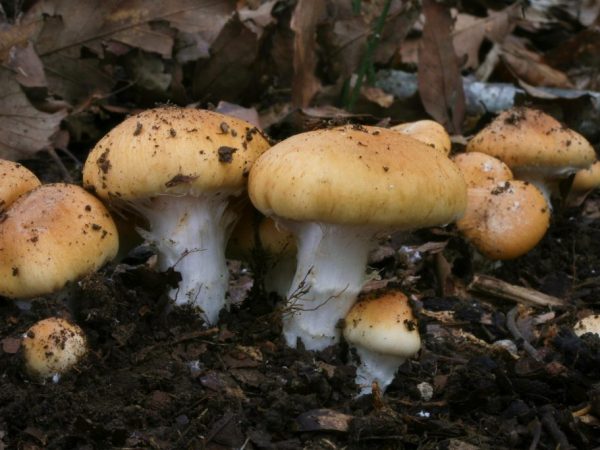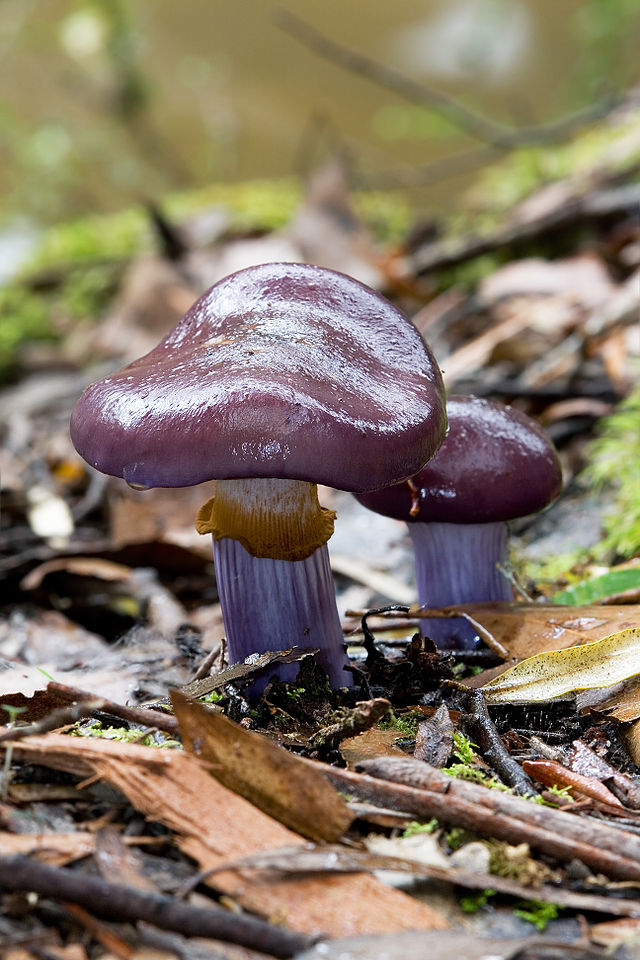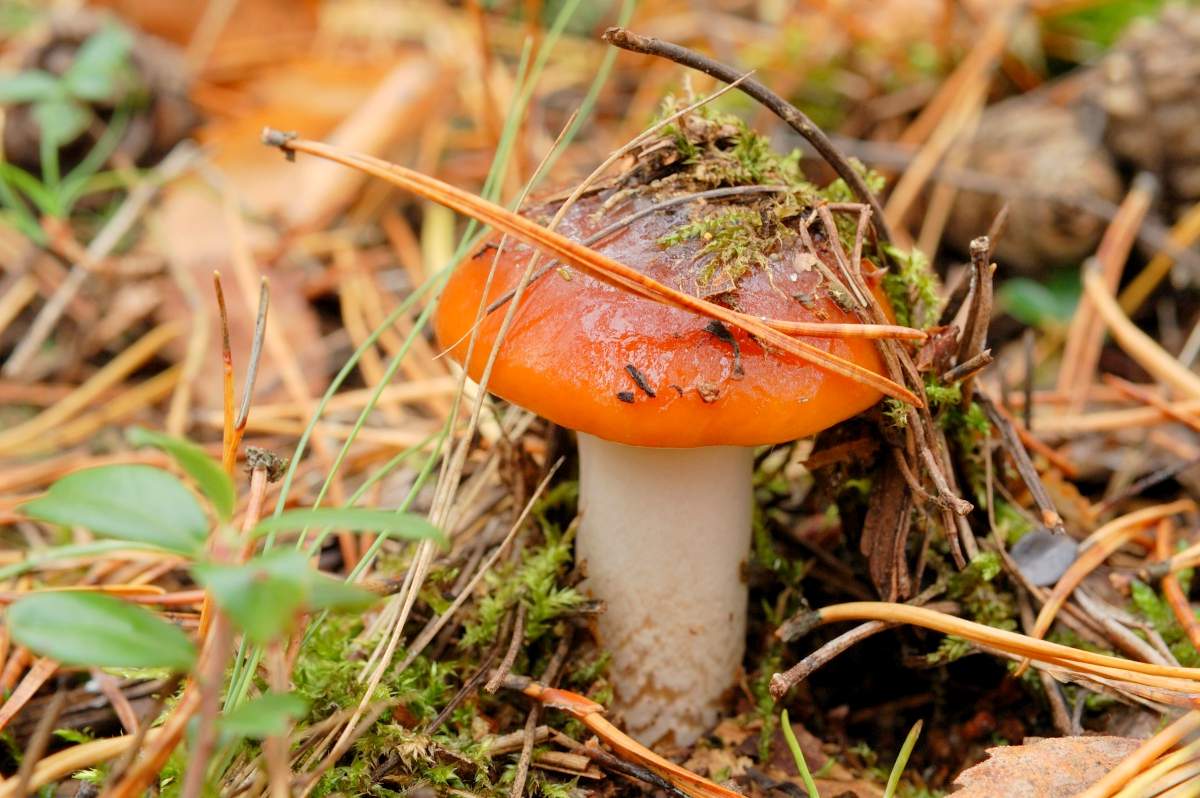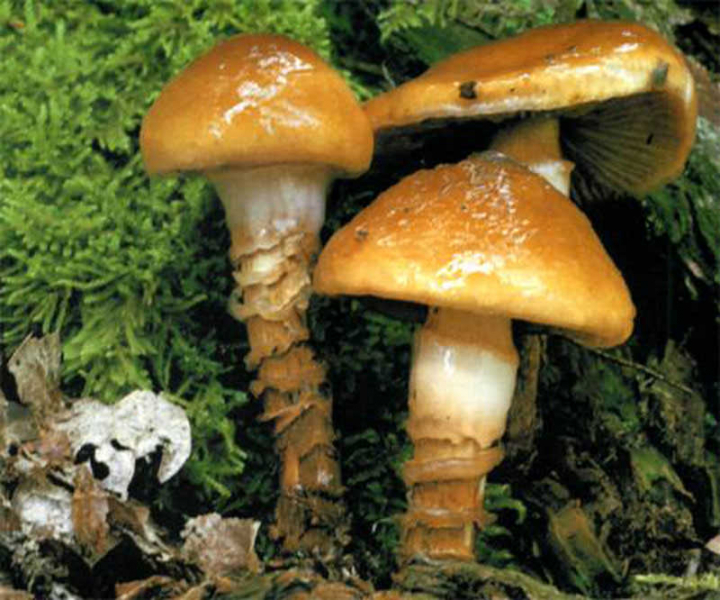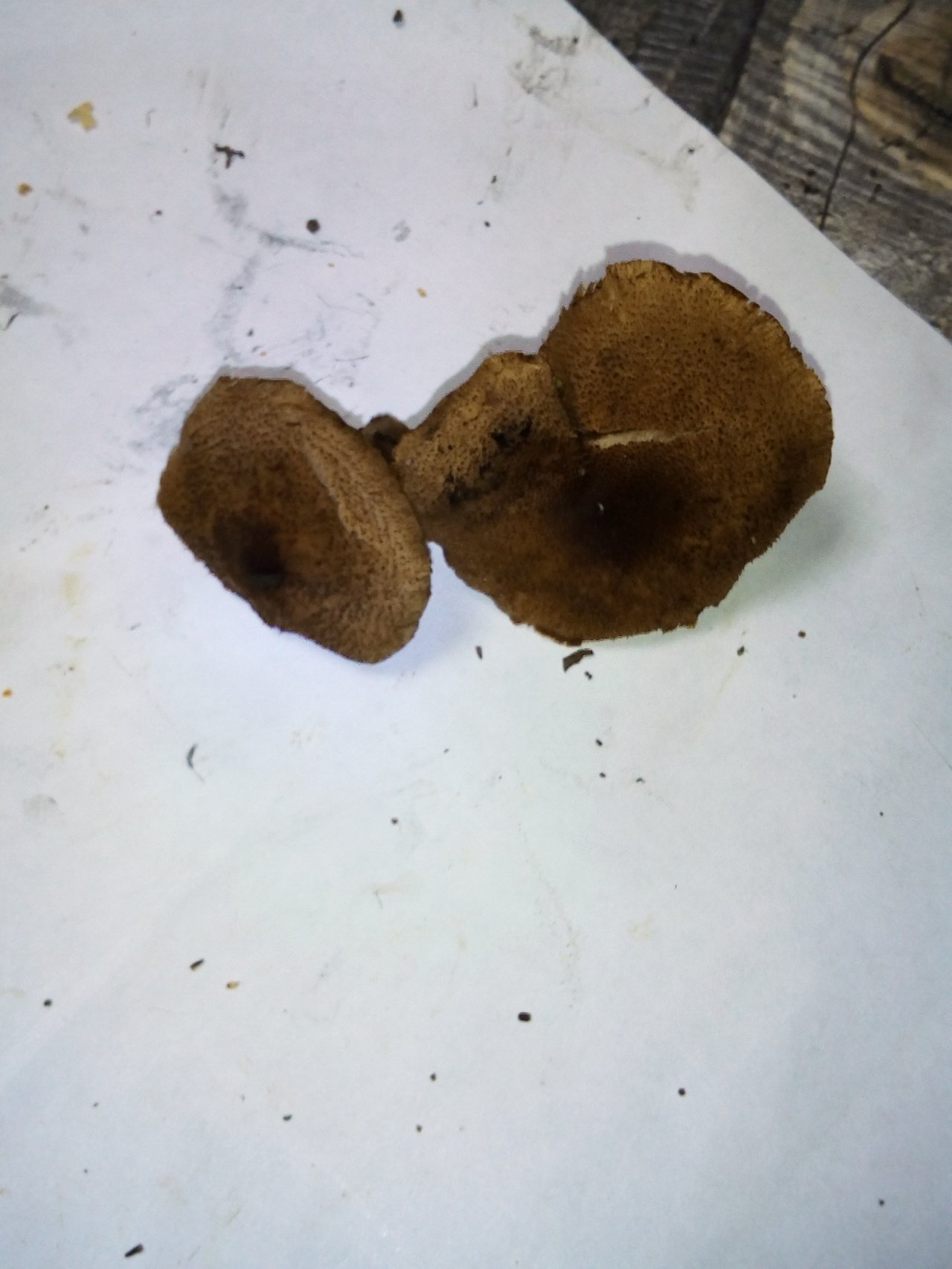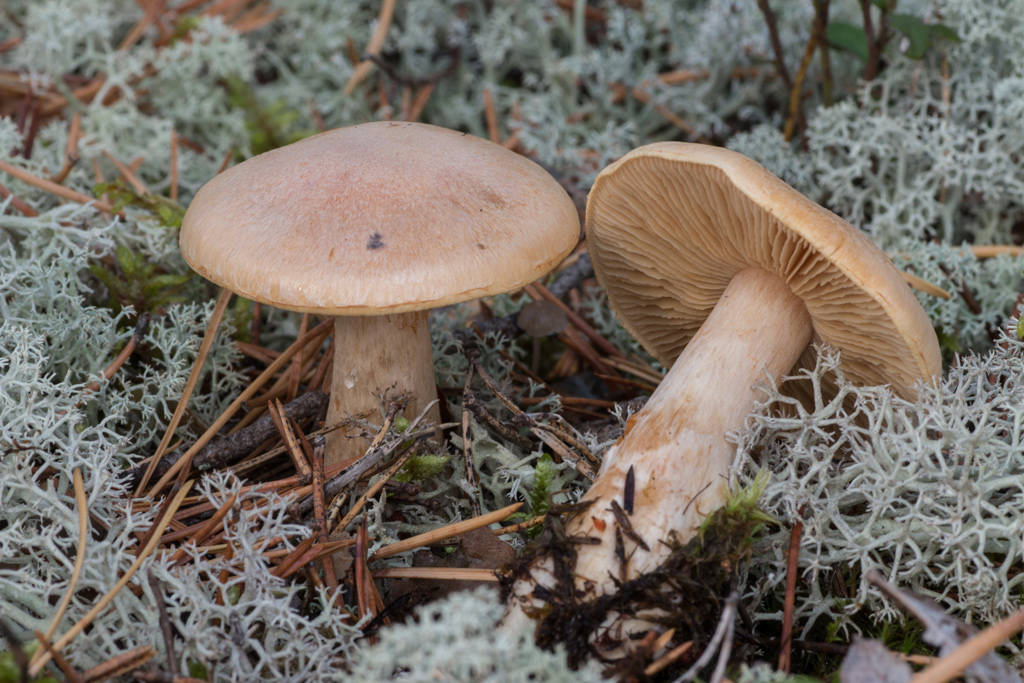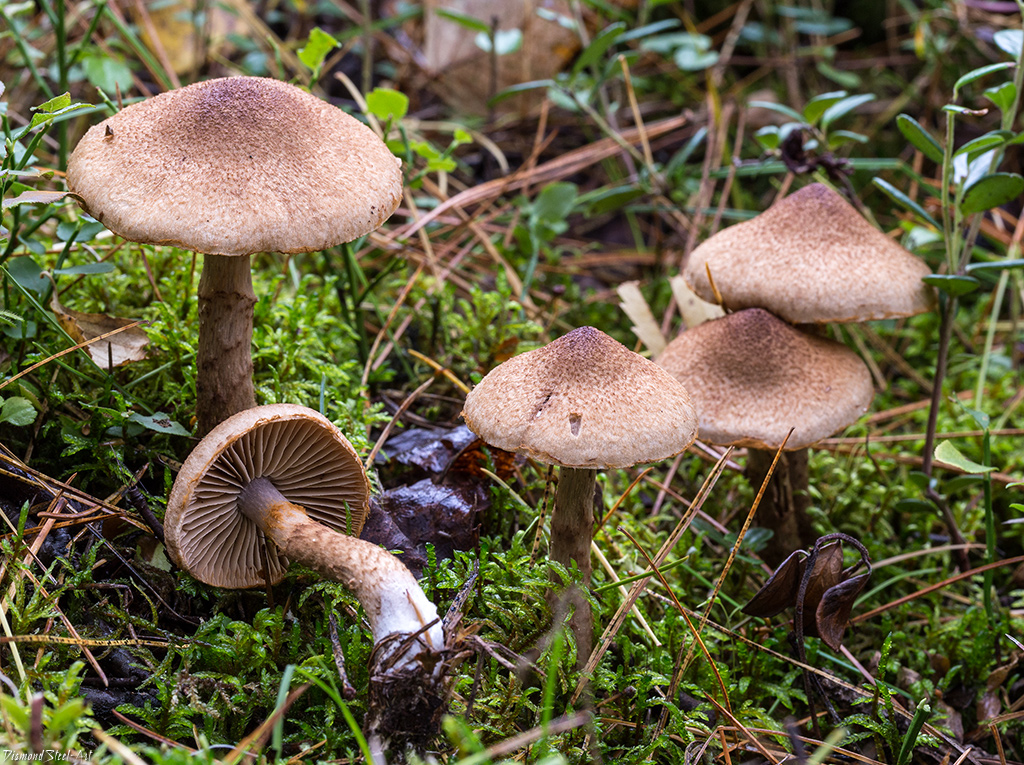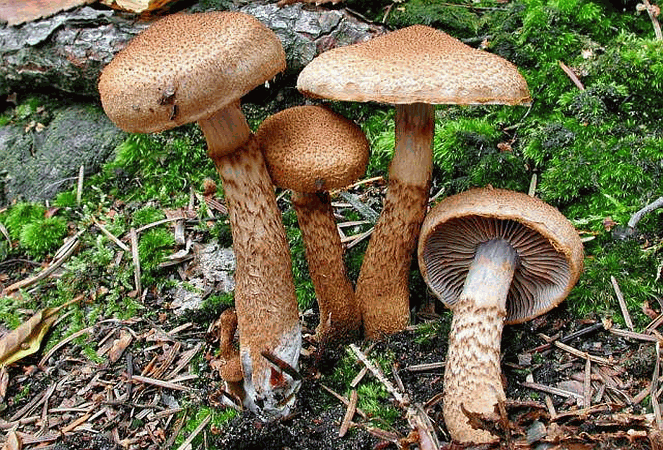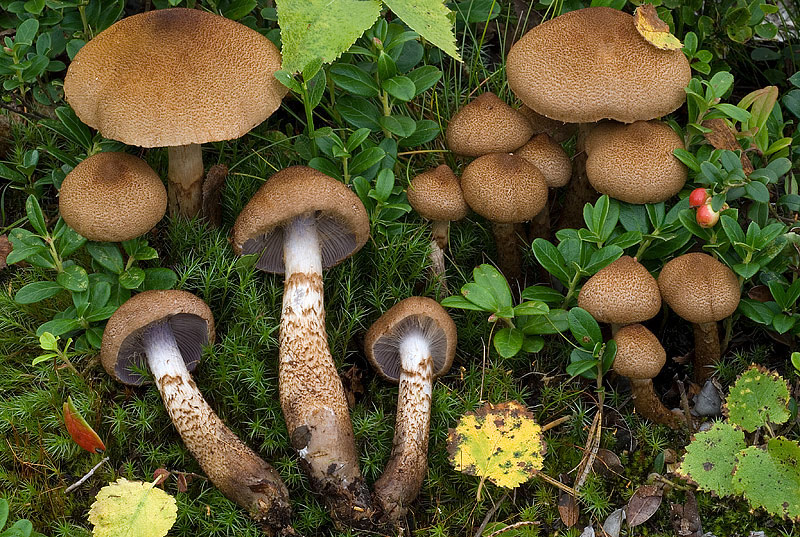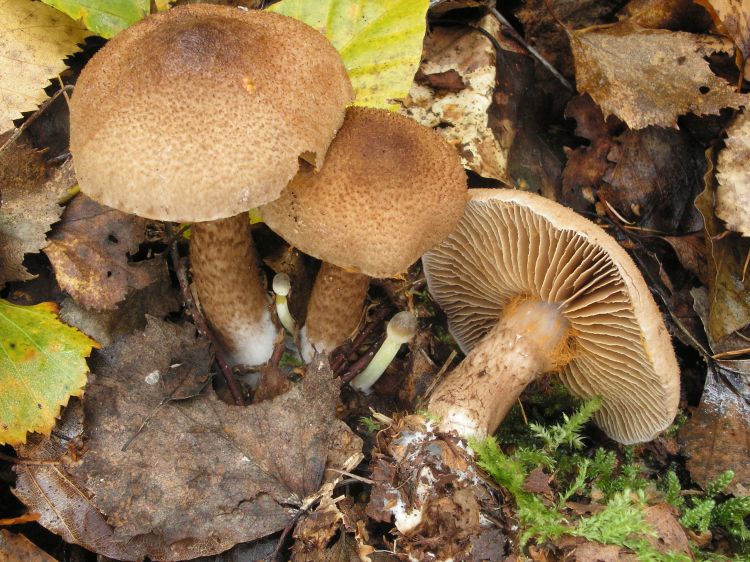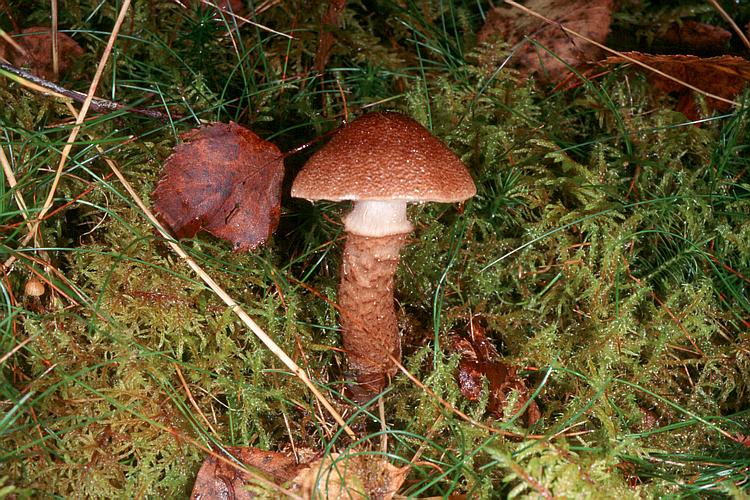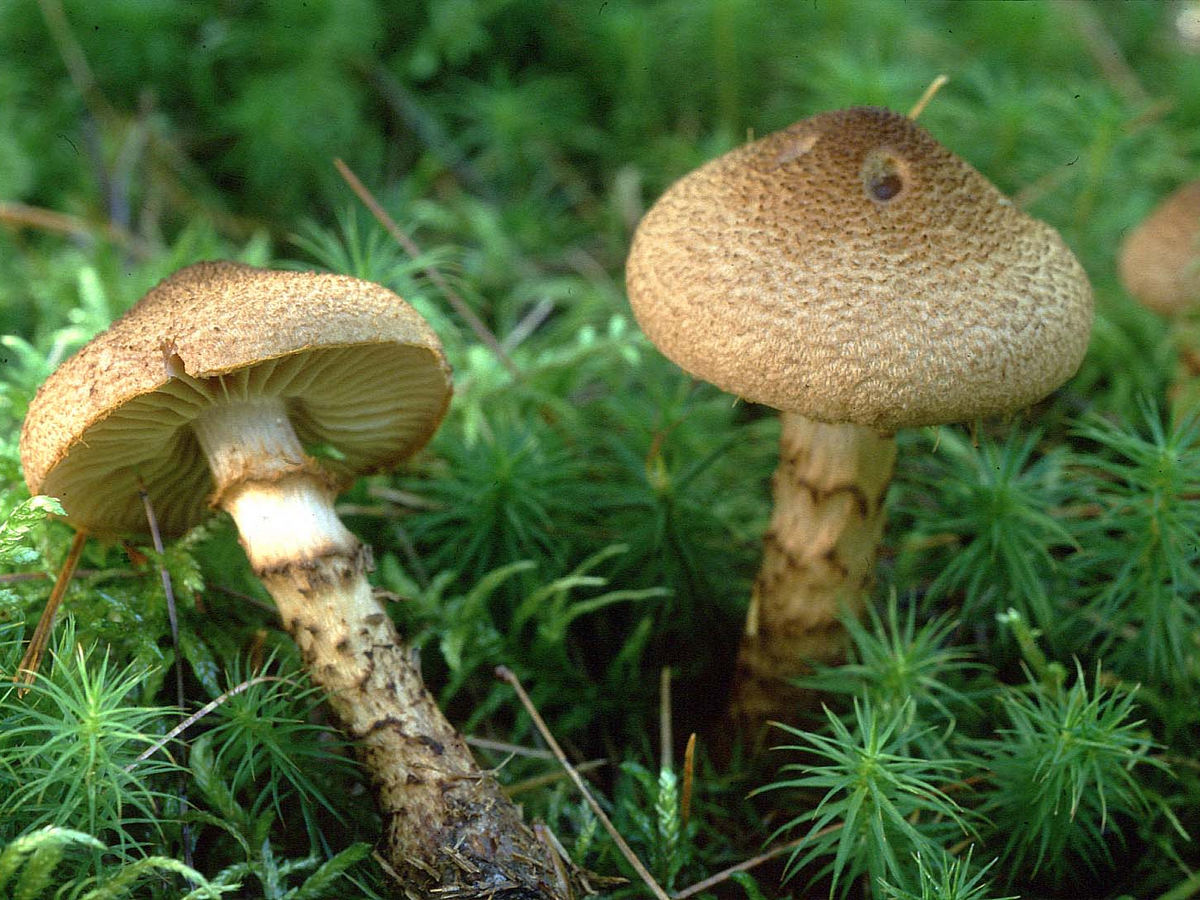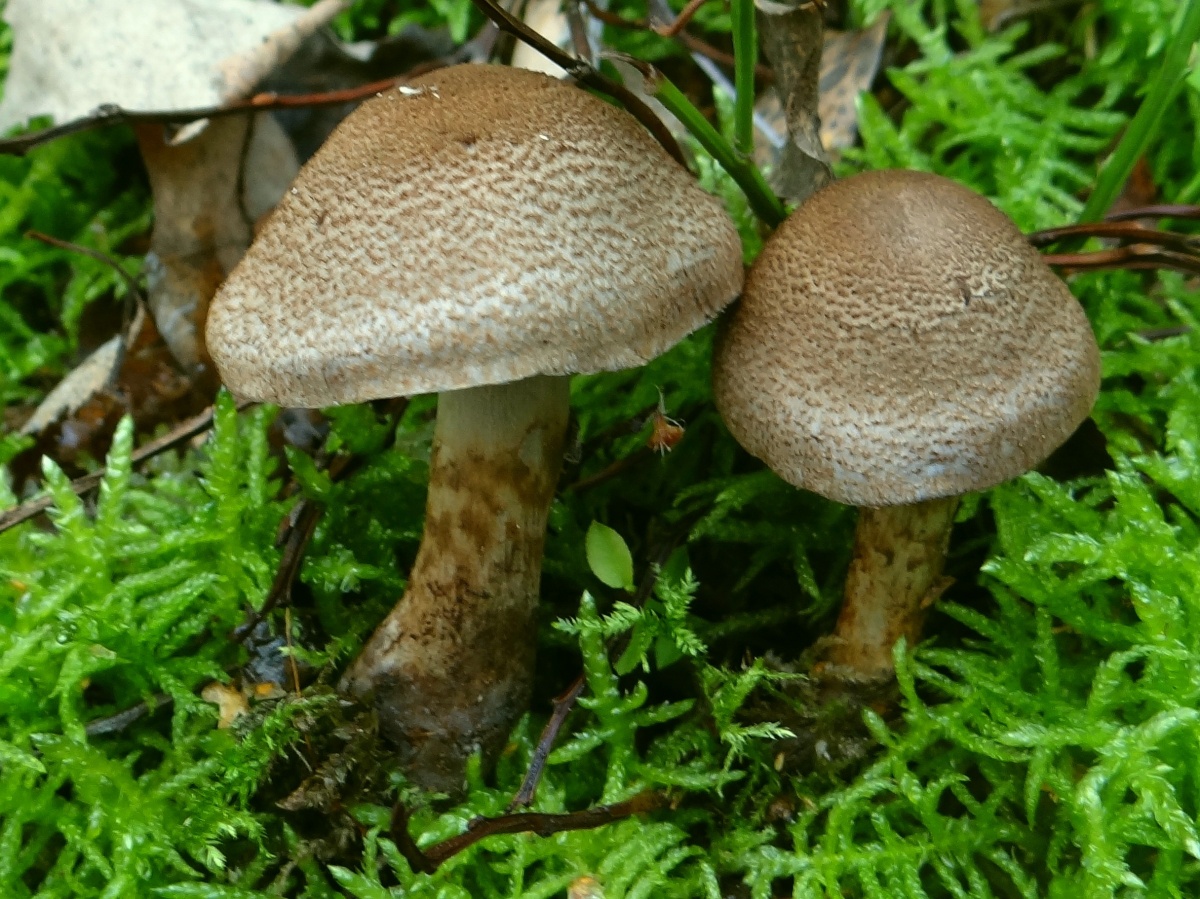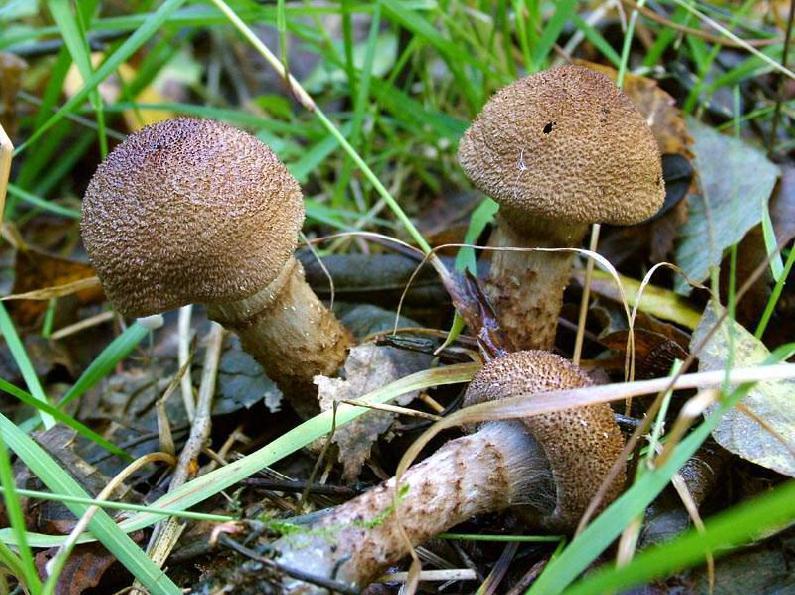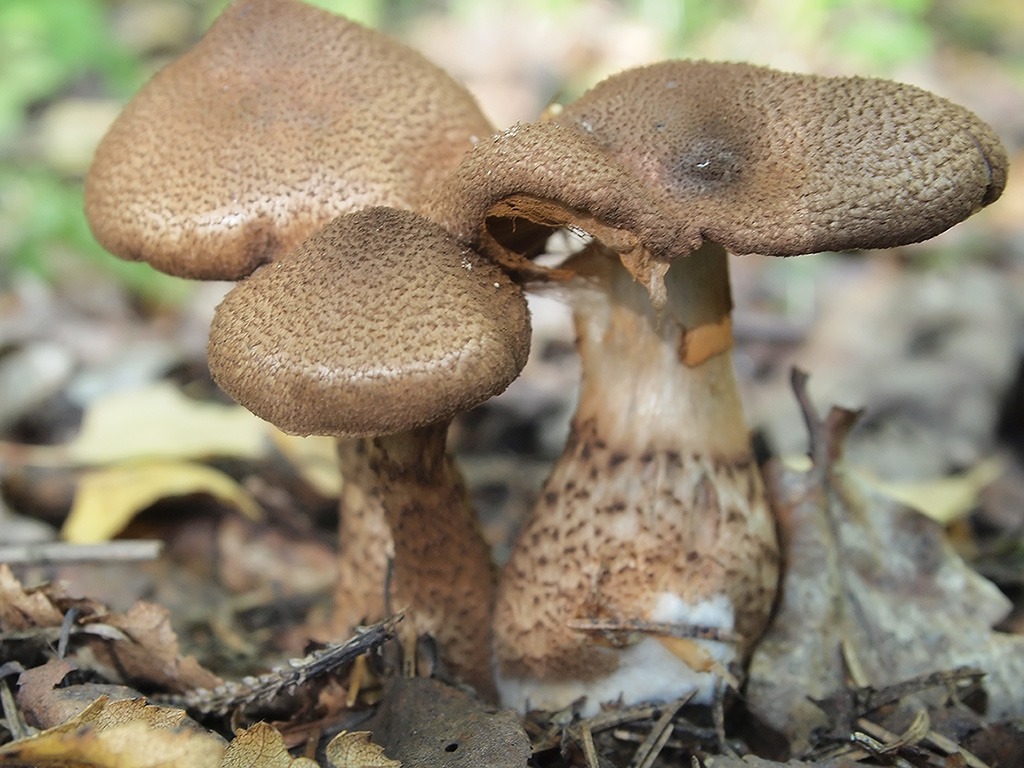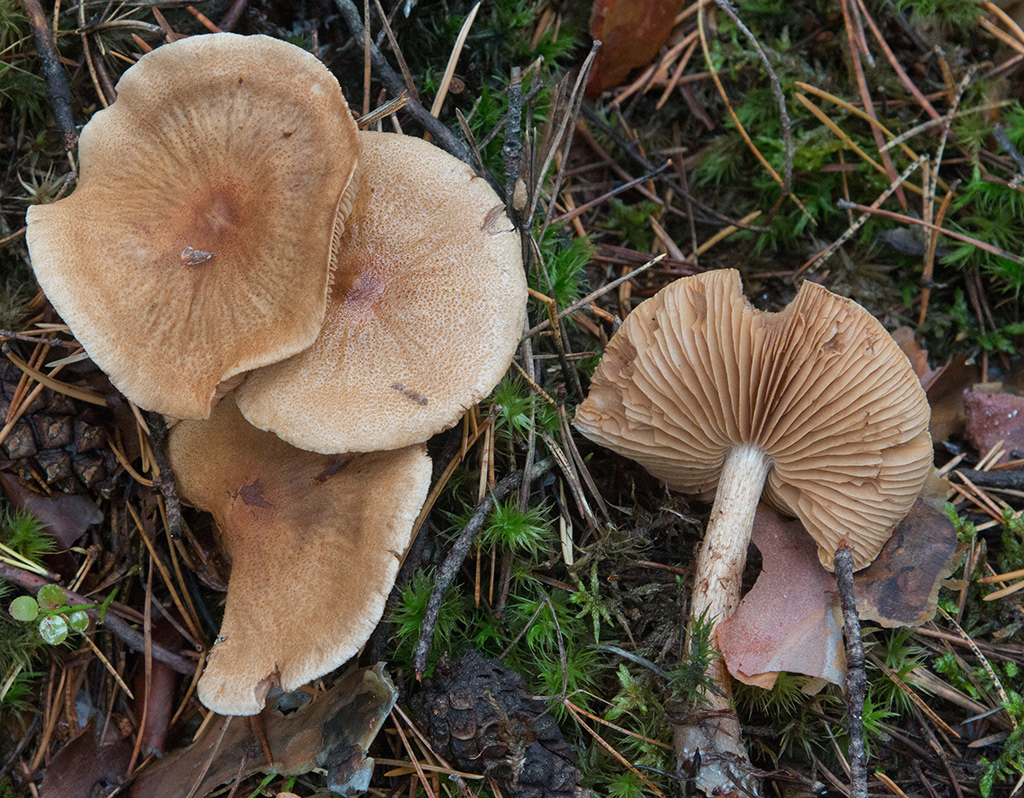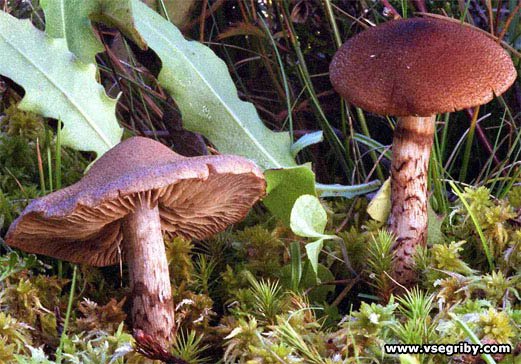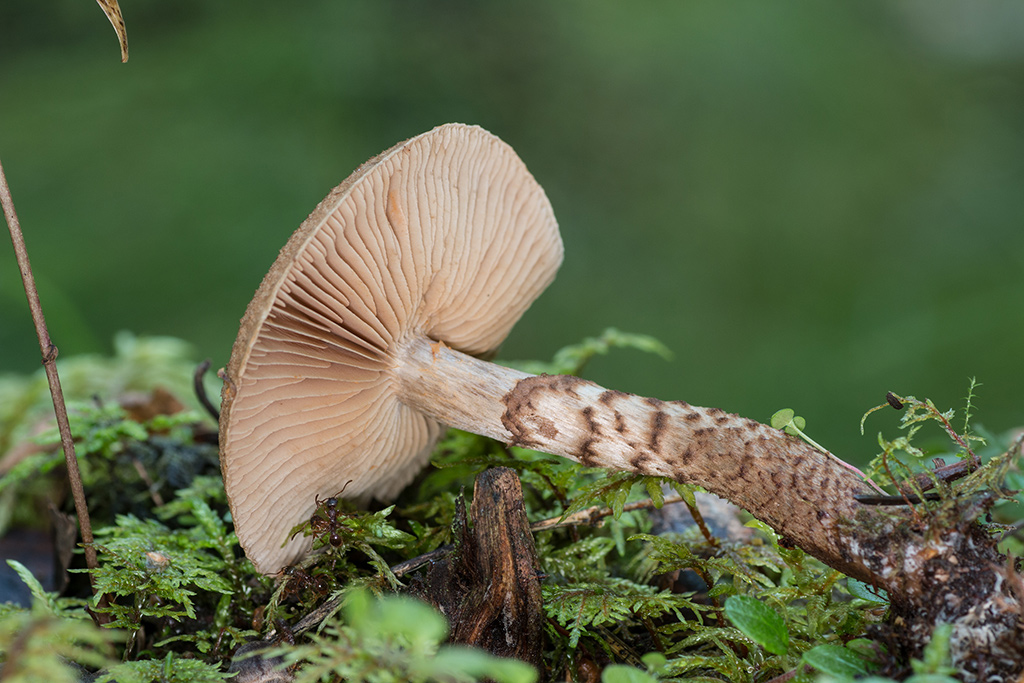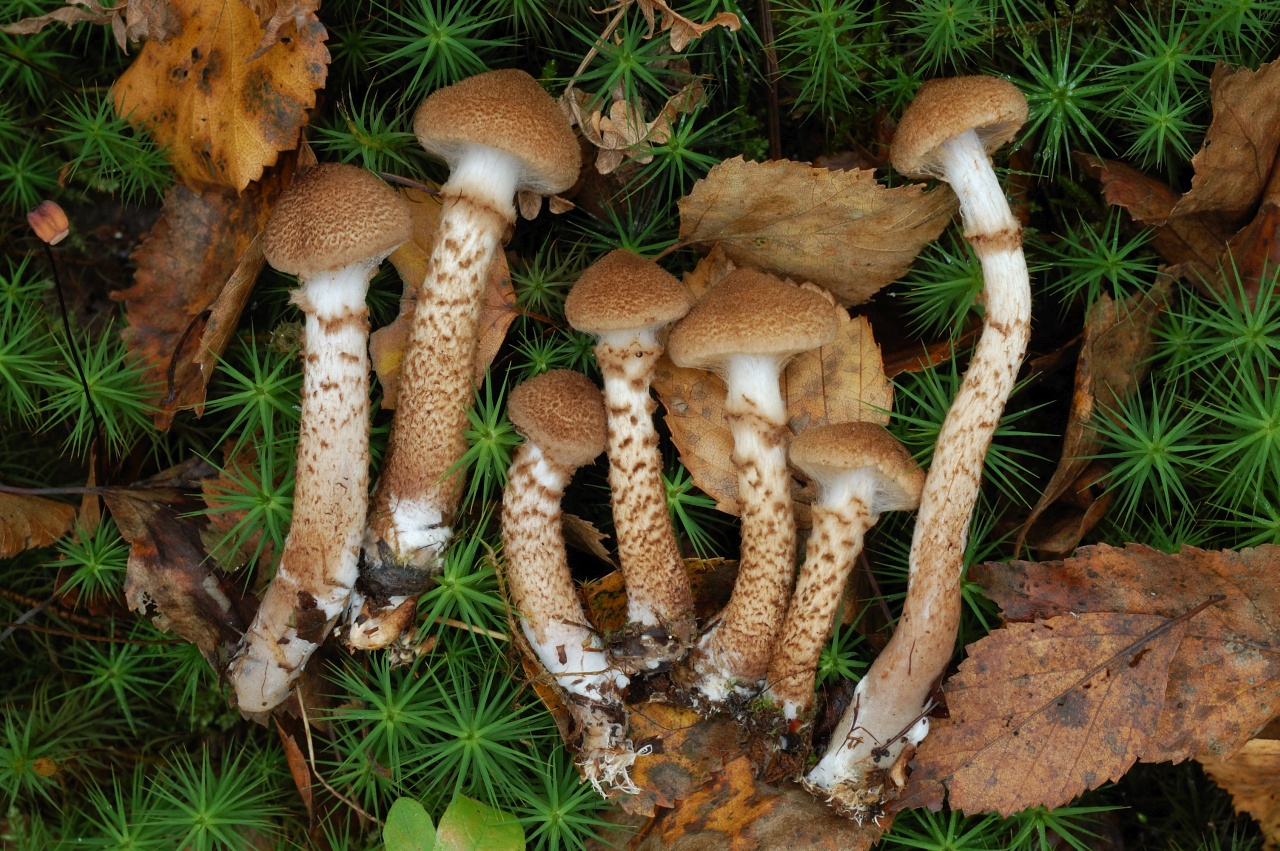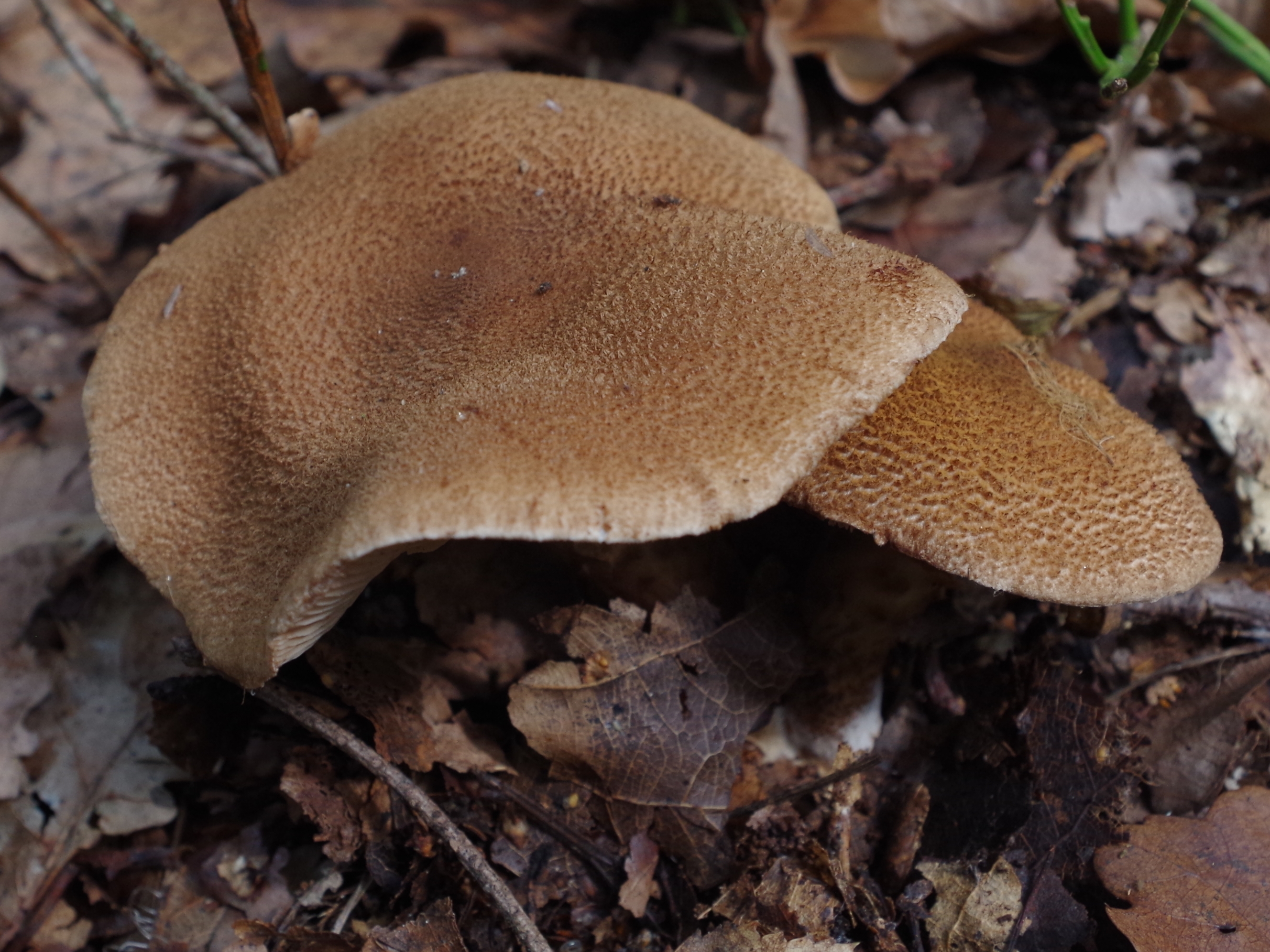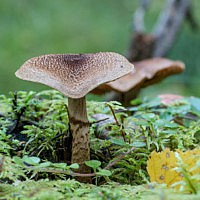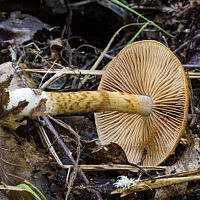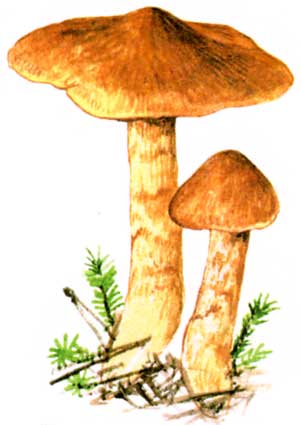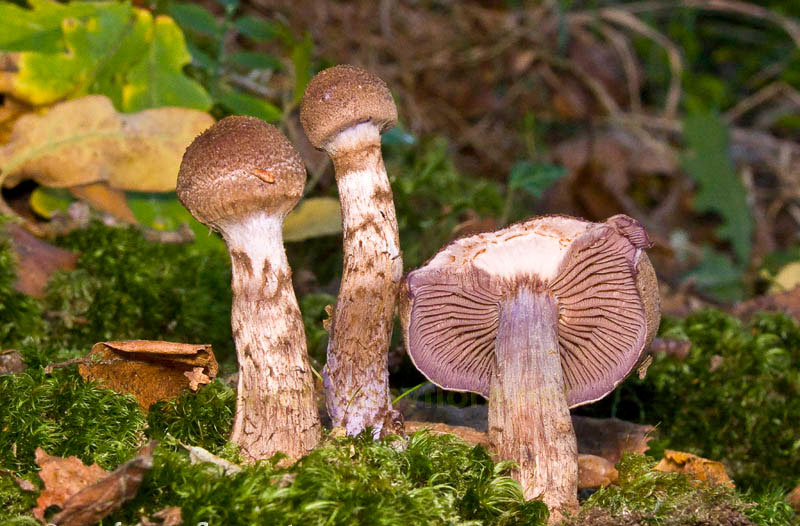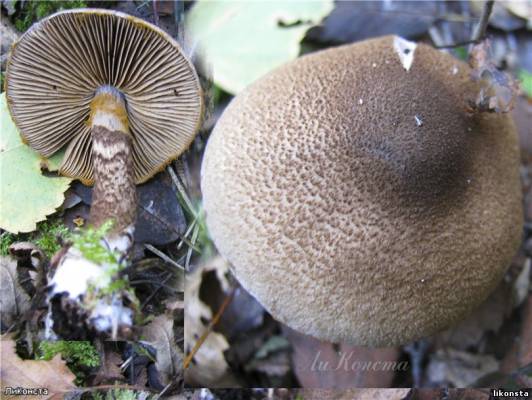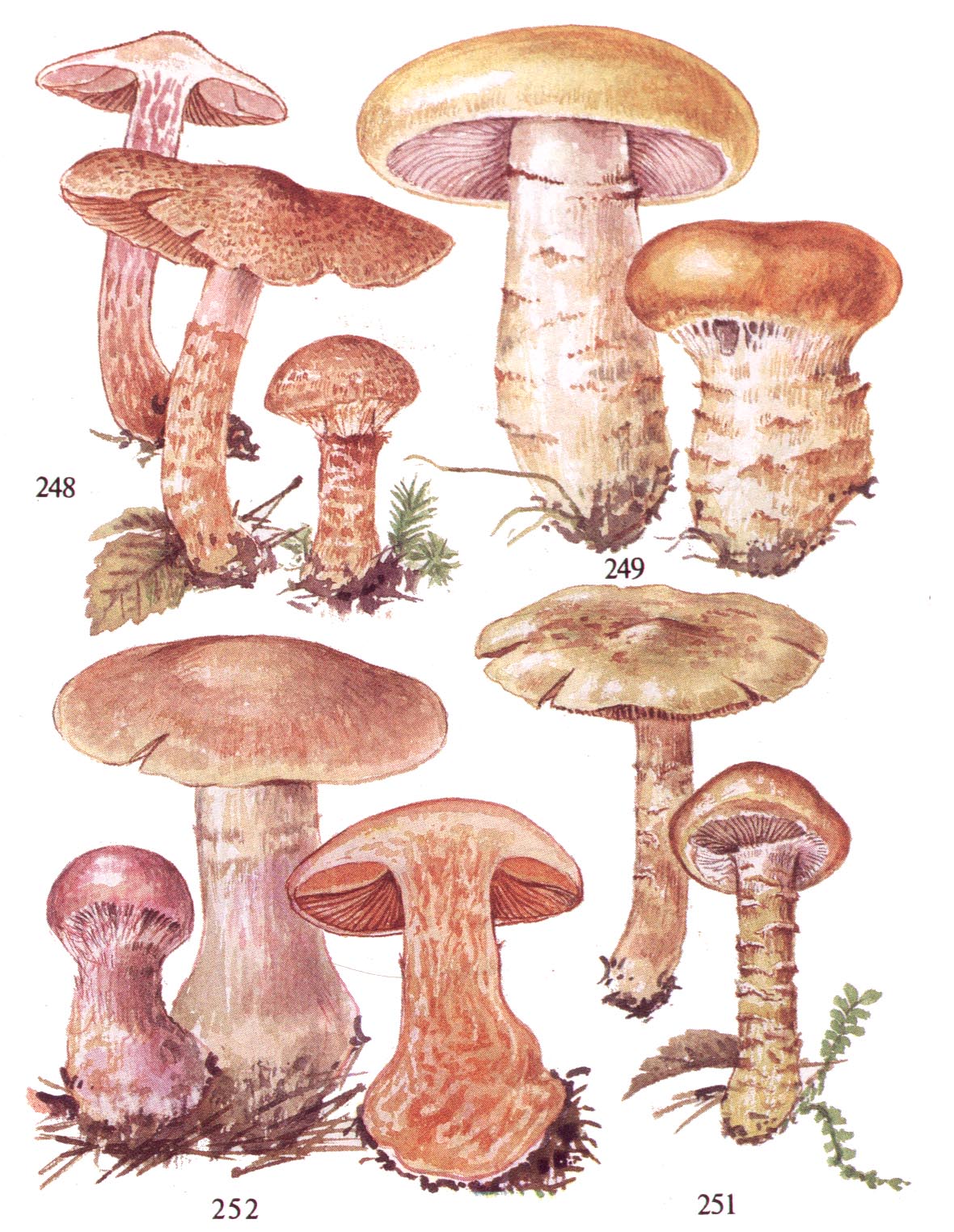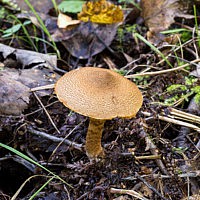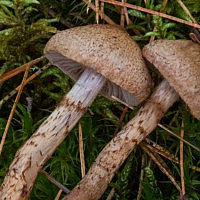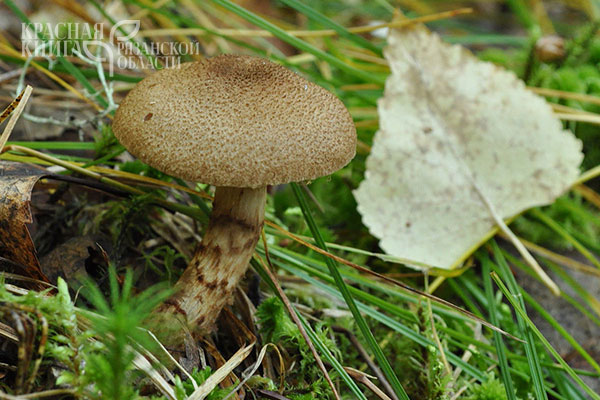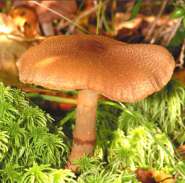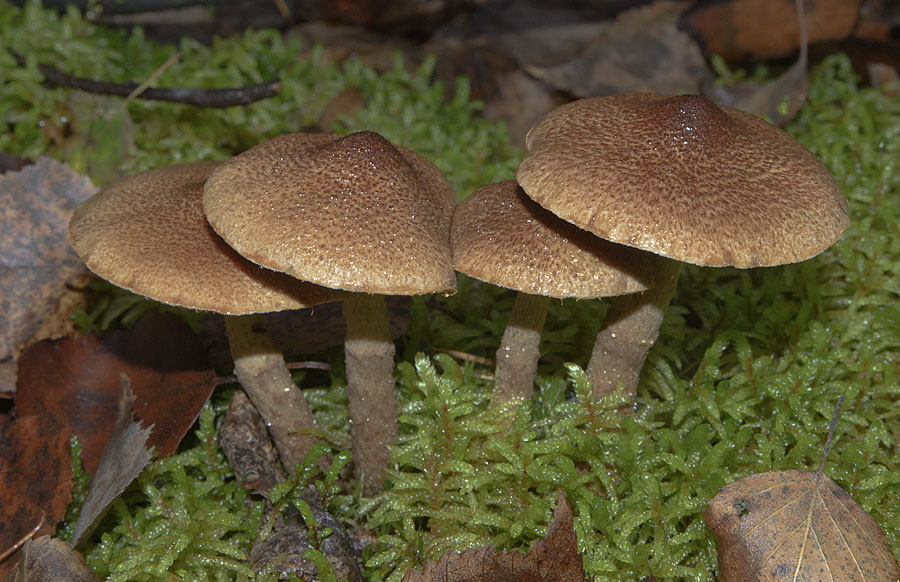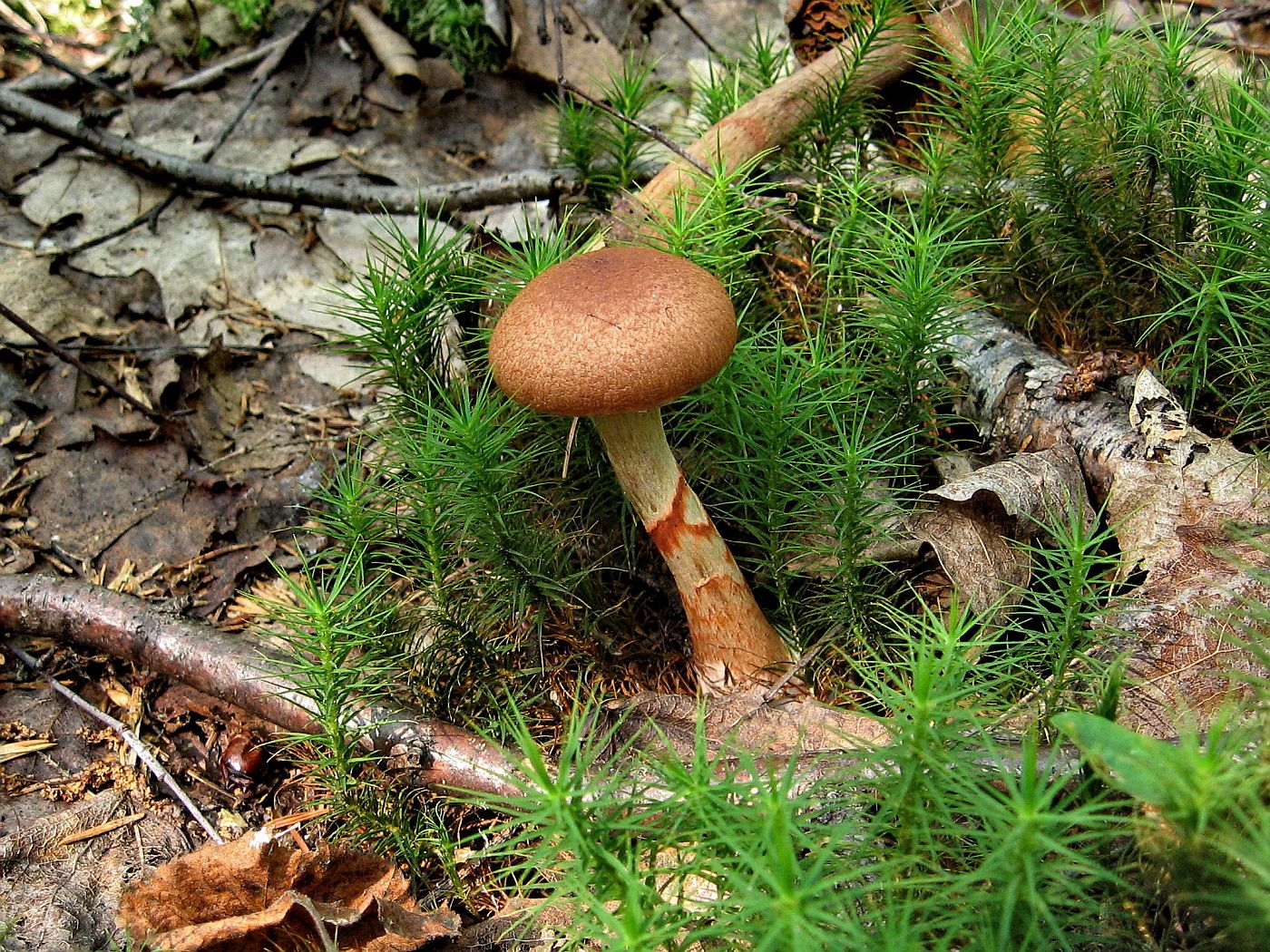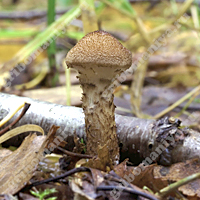Places of growth of scaly cobwebs.
Scaly cobwebs bear fruit from August to September. This species grows in deciduous forests, which contain birches, as well as in conifers. Scaly cobwebs choose wet places, swamps, mossy areas. They live singly or in groups. They are quite common.

Evaluation of the edibility of scaly cobwebs.
The cobweb is scaly, according to some information it is inedible, but some consider it quite edible, but its taste is average. Before cooking, pre-boiling for 15 minutes is required to dissipate the smell. Second courses are prepared from scaly cobwebs, they are pickled and salted. It is advisable to use only hats.

Related species.
The red-olive spider web is a conditionally edible relative of the scaly cobweb. It is a pretty attractive mushroom. Its cap varies from spherical to prostrate, its surface is mucous. The middle is reddish or purple-purple, and the edges are bright purple. Above, the leg is purple, and below it is purple-red. The mash is very bitter, greenish or slightly purple in color.

The reddish-olive spider web is a very rare species. These mushrooms grow in non-moral European areas. They settle in deciduous and mixed forests. They grow in large groups. Calcareous soils are chosen.
The gray-blue webcap is edible. This is a large mushroom. The cap is hemispherical in shape, then it is transformed into a flat one. Its surface is slimy. The color is light ocher. The leg is bluish-purple, and below it is ocher-yellow. The pulp smells unpleasant, it tastes fresh, its color is gray-blue.

This type of webcap grows in North America and European countries. Gray-blue cobwebs settle in large clusters. The habitats are broad-leaved forests.
Lazy webcap (Cortinarius bolaris)
Lazy webcap (lat.Cortinarius bolaris) is a poisonous mushroom of the Spiderweb family (Cortinariaceae).
Hat:
Relatively small (3-7 cm in diameter), pokular-like in youth, gradually opens to slightly convex, cushion-shaped; in older mushrooms, it can be completely spread, especially in dry times. The surface of the cap is densely covered with characteristic red, orange or rusty-brown scales, which makes the mushroom easily recognizable and visible from a distance. The flesh of the cap is white-yellowish, dense, with a faint musty odor.
Plates:
Wide, adherent, medium frequency; in youth, gray, with age, like most cobwebs, become rusty brown from maturing spores.
Spore powder:
Rusty brown.
Leg:
Usually short and thick (3-6 cm in height, 1-1.5 cm in thickness), often twisted and twisted, dense, strong; the surface, like that of the cap, is covered with scales of the corresponding color, albeit not so evenly. The pulp in the leg is fibrous, dark at the base.
Spreading:
Lazy webcap meets in September-October in forests of various types, forming mycorrhiza, apparently, with trees of different species, from birch to pine. Prefers acidic soils, bears fruit in damp places, in mosses, often in groups of fungi of different ages.
Similar species:
Cortinarius bolaris in its typical form is difficult to confuse with any other cobweb - the variegated color of the cap practically eliminates error. Literature, however, points to a certain cobweb of peacocks (Cortinarius pavonius), a mushroom with purple plates in youth, but whether it grows with us is still a big question.
Edible: The mushroom is inedible or weakly (if not weakly) poisonous.
Remarks The fact that Cortinarius bolaris is classified as a "small webcap" is a big deception! Knowing about the colorful "bumpkin", I searched for it for a long time among small variegated mushrooms, I searched and did not find it; he, however, was not there, for when this mushroom is, doubts disappear by themselves. Beautiful crimson-and-motley hats in green moss, like the eggs of an alien invader - what a find could be more beautiful! And I would sharply criticize people who pluck and scatter lazy cobwebs around the neighborhood.Cortinarius bolaris bears no resemblance to any fungus that may be of interest to the purveyor. With none. So why should he tolerate from people what he would not tolerate? I do not understand this and do not want to understand.
Cobweb smooth-skinned
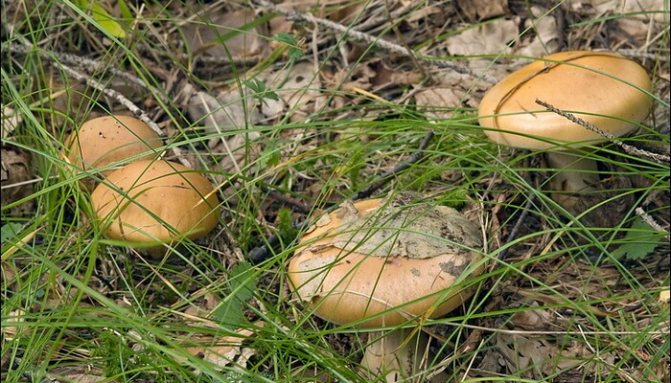
Habitats of the smooth-skinned penny (Cortinarius allutus): coniferous and deciduous forests, in damp places, near swamps, grow in groups.
Harvesting season: July - October.

The hat has a diameter of 4-8 cm, sometimes up to 10 cm, at first hemispherical, later convex-outstretched. A distinctive feature of the species is a yellow-orange cap with lighter, often wavy edges. With age, the edges of the cap crack.
Look at the photo - this edible spider web has a high leg, 4-10 cm and 6-18 mm thick, widened at the base, light brown, often with a purple tint:

The flesh is whitish or bluish, at the break it changes color to brownish and even purple, without much taste or smell.
The plates are adherent, at first creamy with a purple tint, later rusty-brown. Variability. The cap color ranges from light brown to yellow-orange with lighter edges.
Similar species. The smooth-skinned webcap is similar in shape to the brown webcap (Cortinarius brunneus), which is distinguished by the dark brown color of the cap.
The smooth-skinned spiderweb mushroom is edible, belongs to the 4th category.
Cooking methods: frying, after preliminary boiling for at least 25 minutes.
Spreading
On the territory of our country, such a rare and disappearing conditionally edible mushroom, like a purple spider web, most often grows in forests of coniferous and deciduous types. In the northern temperate zone, it can be found in a state of symbiosis with the roots of trees familiar to everyone - pine and spruce, birch and oak, beech and many others. The mushroom is found not only in Russia, but also in many foreign areas located in the vastness of North America, Europe or Japan.
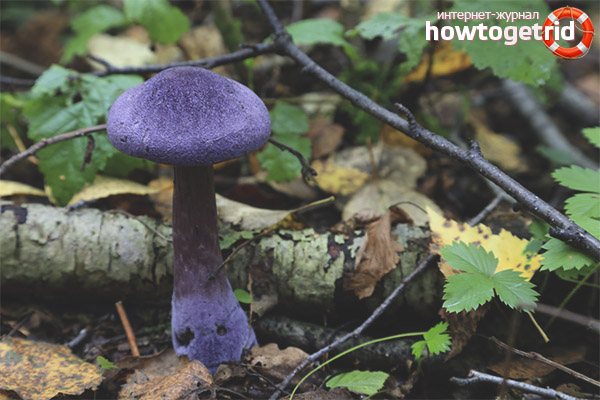
Ripening of this species of spiderweb occurs during a transition period, from summer to autumn, usually in late August and early September. The fungus willingly settles on mossy soil, acidic and humus soil, so the chances of stumbling upon it near a swamp are much higher than meeting it in the middle of a forest edge. The purple webcap grows in different ways, both in a stand-alone form and as part of small groups, usually choosing the roots of coniferous or deciduous trees as their "home".
Interesting facts about the purple spider web
Not everyone was fortunate enough to see the gadget with their own eyes, but there are rumors in the circle of mushroom pickers about its interesting features:
- In a number of regions, the mushroom is listed in the Red Book. Its pages contain information about the extinct and the rarest species of plants, animals and fungi.
- The technology for making paints often involves the use of cobwebs, since they are considered an environmentally friendly product.
- The cobweb, from which the mushroom got its name, is necessary to provide a special microclimate for maturing spores. It plays the role of a kind of greenhouse and disappears in adult specimens.
- The mutual exchange of useful substances occurs between the fungus and the tree with which it created mycorrhiza. The development of most species is possible exclusively in a one-way process, i.e. mushrooms suck vital juices from the tree, but do not give it anything in return.
- Pharmaceutical companies have learned about the ability of the spider web to lower blood glucose levels. Therefore, it has become an indispensable component in the manufacture of drugs that control hypoglycemia. It is often found in antibiotics and antifungal agents.
- Culinary connoisseurs rarely get the opportunity to taste an exotic mushroom. If a chance still appears, then it is not added to hot dishes or snacks, since the pulp has a weak aroma. On a note!
Best of all, the taste of the spider web is revealed when salting or pickling.
- In case of poisoning with poisonous species of cobwebs (beautiful, shiny, mountainous, reddish), the first symptoms may appear after a few days or weeks.
The podbolotnik is listed in the Red Book and is protected by law, as it is very rarely found in nature. This makes it even more attractive in the eyes of lovers of "quiet hunting" who seek to see the unique mushroom with their own eyes.
Beneficial features
The webcap is not harmless. Many members of this family are toxic, and some are even life-threatening. However, the beneficial substances that make up these mushrooms are widely used in medicine and the chemical industry. For medicinal purposes, the following types are used:
- Red (poisonous). Substances included in its biochemical composition prevent the development of tuberculosis.
- Bracelet (conditionally edible). Has an antiseptic effect.
- Broken (poisonous). It contains alkaloids, which are used in the treatment of diseases associated with memory impairment.
- Goat (inedible). It contains inolomin, which is a strong antibiotic.
There are few edible species. They do not have the same aroma as porcini mushrooms or champignons, but they have an original taste and large sizes (they reach up to 10 cm in height of the leg and up to 17 cm in the diameter of the cap). Professional mushroom pickers are happy to collect them for the preparation of fresh dishes and preservation. In culinary masterpieces, they often use a yellow cobweb (aka triumphal), watery blue (sometimes called gray-blue), as well as an excellent cobweb and purple. All types of edible mushrooms can be boiled, fried, pickled, salted, and canned.
Toxic substances
The most beautiful webcap is a rare deadly poisonous mushroom that contains a very strong toxin, a complex polypeptide - orellanin. It does not lose its toxic qualities after being treated with high temperatures, placed in a different acidic environment and dried. The toxicity is greatly reduced only under the influence of ultraviolet and solar radiation. This mushroom contains 7.5 mg of orellanin for every 1 g of dried mushrooms.
Experts believe that in addition to orellanin, mushrooms contain 2 additional polypeptides - cortinarin A and B, which determine the totality of manifestations in the form of patient complaints. The joint presence of these 3 components was revealed only in 2 types of fungi of this family: the most beautiful cobweb (reddish) and orange-red.

How to properly cover lilies for the winter
In most cases, it is not required to additionally cover garden lilies, they need a natural snow cover with a layer of 10 cm or more. But how to keep the lilies in winter, when there is still no snow cover or it is very weak and the frosts are strong? In these cases, it is better to cover the planting of lilies with dry peat, fallen leaves or needles.
You need to remove the winter shelter on time - as the snow melts. If you remove the shelter too late, due to the lack of light, the lilies will give very thin sprouts that hardly break through the foliage. Harvesting the mulch too early stimulates the strong growth of lilies, as a result of which delicate sprouts may be damaged by frost.
Many experienced flower growers leave in their flower gardens and Oriental hybrids of lilies, which do not differ in good winter hardiness. The success of wintering these species depends entirely on how to prepare lilies for winter, taking into account their characteristics. The fact is that Eastern hybrids are not recommended to be left in the flower garden for the winter, not because they freeze out, but because they get wet under deep snowdrifts and suffer from excessive moisture in the spring. Therefore, if you are wondering how to preserve lilies for the winter, you need to make sure that they winter in fairly dry conditions.

How to keep lilies of Oriental hybrids:
- plant Oriental hybrids in elevated flower beds;
- pour sand into each hole and sprinkle the planting material on top with sand, and only then with soil;
- cover the lilies with peat in the fall;
- after the ground freezes, sprinkle the peat with fallen leaves;
- cover the planting with foil.
Their further development and flowering largely depends on how lilies winter. Therefore, try to provide your pets with comfortable wintering conditions in accordance with the specific features, and they will certainly thank you with lush flowering next season!
If growers leave their flowers to winter in the open field, then before the onset of cold weather, most of them should be covered. You can leave these flowers without shelter if the winters are mild in the region (for example, in the South of Russia), and the varieties are highly frost-resistant.
In principle, if lilies do not grow in the conditions of the Far North (and close to them in climatic conditions), then many varieties and hybrids can be left in flower beds for the winter:
- Asian (tiger) hybrids;
- Martagon (curly);
- Candidum;
- Tubular;
- hybrids Longiflorum Asiatic (LA),
- OT hybrids;
- Royal;
- Daurskys.
All of the above varieties feel great in the garden in winter, only they should be covered in case of severe frosts.
Shelter is necessary only for long-flowered, oriental and American lily hybrids.
Usually, lilies do not need special shelter if a large amount of snow falls in the region in winter, which will cover the bulbs during the winter. If there is little snow or the winter will be warm, then care should be taken in advance to prepare a natural covering material. It is best to use needles (pine or spruce sawdust, or spruce branches), under which slugs and other "harmful" insects will not crawl, as well as pests (especially mice) that can damage the growth points of bulbous plants.
Why does a mushroom have a web?
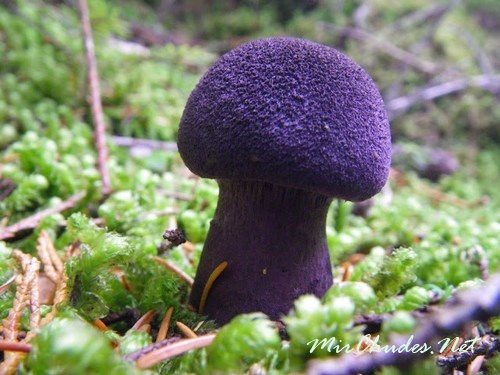
The purple webcap grows everywhere, but not everyone is lucky to find it. The generic name "spiderweb" and the name of the family "spiderweb" were given to these mushrooms because of the cobweb fibers that form a kind of blanket that envelops the growing mushroom cap and its leg, protecting them from damage and creating optimal microconditions for maturing spores. This cobweb blanket does not last forever: it breaks and disappears as the fruiting body grows. At the beginning of growth, the cap of the mushroom is convex, spherical, with an inwardly concave edge. Over time, it grows up to 15 centimeters in diameter, becomes prostrate. The leg of the purple spider web is 12-16 cm in height, with a bulbous thickening at the base, especially noticeable at the initial stages of growth. Both the leg of the mushroom and its cap are covered with black-purple scales. It turns out that the purple mushroom isn't just outside. If you break its flesh, you can see that it is also painted in bluish or gray-purple colors.
Crimson webcap (Cortinarius purpurascens)
Scarlet webcap (Cortinarius purpurascens) - a mushroom, which according to some sources belongs to the edible, belongs to the Spiderweb genus, the Cobweb family. The main synonym for its name is the French term Cortinarius purpurascens.
External description
The fruit body of the crimson spider web consists of a leg 6 to 8 cm long and a cap, the diameter of which is up to 15 cm. Initially, the cap has a convex shape, but in ripening mushrooms it becomes prostrate, sticky to the touch and flat. The flesh of the cap is characterized by its fiber, and the color of the cap itself can vary from olive brown to reddish brown, with a slightly darker color in the central part. When the pulp dries, the cap ceases to shine.
The mushroom pulp is characterized by a bluish tint, but upon mechanical action and cutting it acquires a purple color. The pulp of this mushroom, as such, has no taste, but the aroma is pleasant.
The girth of the mushroom stalk varies within 1-1.2 cm, the stalk is very dense in structure, at the base it acquires a tuberous swollen shape. The main color of the stem of the mushroom is purple.
The hymenophore is located on the inner surface of the cap, and consists of plates adhered to the pedicle with a tooth, initially having a purple color, but gradually becoming rusty-brown or brownish. The plates contain a spore powder of rusty-brown color, consisting of almond-shaped spores covered with warts.
Season and habitat
Active fruiting of the crimson spider web occurs in the autumn period. The fungus of this species can be found in mixed, deciduous or coniferous forests, mainly at the end of August and throughout September.
Edibility
Information about whether the crimson cobweb is edible is controversial. Some sources say that this type of mushroom is allowed to be eaten, while others indicate that the fruiting bodies of this mushroom are not suitable for eating, since they have low taste. Conventionally, the crimson spider web can be called edible, mainly it is eaten salted or pickled. The nutritional properties of the species have been little studied.
Similar types and differences from them
The scarlet spider web is similar in appearance to some other types of spider web. The main distinguishing features of the species is the fact that the flesh of the described mushroom, under mechanical action (pressure), changes its color to bright purple.
Description of the scaly spider web.
The cap of the scaly cobweb at first resembles a bell, later becomes convex in the center with a blunt tubercle. The color of the cap is brownish brown or pale brown, against this background there is a large number of dark brown scales. The edges of the cap are light brownish, sometimes they have an olive tint.

The plates are rarely located under the cap. They grow with teeth to the fruiting body. At first, the color of the plates is brown-gray with a purple tint, and later becomes rusty-brown or brownish. The color of the cobweb bedspread is light brownish. The color of the spore powder is brown.
The leg is cylindrical, slightly clavate, wider at the bottom. Its length is 5-8 centimeters, and the girth is 1 centimeter. Inside, the leg is at first solid, but eventually becomes hollow. Above, the leg is smooth, gray-brown in color with a tinge of purple, and below it is light brown with several belts of dark brown color.

The flesh of the scaly cobweb is loose. The color of the pulp in the cap is gray-purple, and in the leg it is light brown. Sometimes the pulp has a faint odor.

